

Barton Civic Society Plaques
Barton upon Humber Civic Society provide two main types of plaques for the town. There is the Annual Award plaque (see the Good Marks page) and there are information plaques. These plaques are either blue or dark green, and are positioned on important buildings around the town. There is a brief description on the plaque but for more detailed information on a selection of plaques please see below.
 |
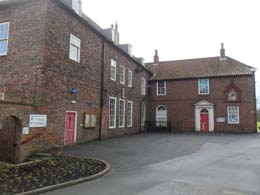 |
Baysgarth House Dating from the late 16th to early17th century and at one time home of the Nelthorpe family. It would later pass through a succession of owners until eventually, in 1825, it was acquired by John Preston (the origins of the name Preston Lane). In 1930 the estate was donated to the town by Clare Ermyntrude Magdalen Wright Ramsden, the daughter of Lt. Robert Marmaduke Stanbury Taylor. It was also the Emergency Centre for Barton during the Second World war. |
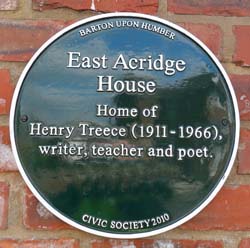 |
 |
East Acridge House The former home of the
writer, teacher and poet Henry Treece, famous for such works as The Haunted
Garden, Ask for King Billy, Killer in Dark Glasses and many more. |
 |
 |
Tyrwhitt Hall - Beck Hill Pronounced "Tirrit", this building dates from the 15th Century or earlier. The name comes from the Tyrewhitt family who lived here in the 16th Century. Philip Pape, sculptor, letterer, singer and choirmaster, lived and worked here from 1960 to 1982. |
 |
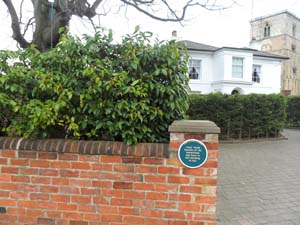 |
The Old Vicarage - Beck Hill The old vicarage of St. Peter's Church (see in the background). David George Hogarth was born here in 1862. Chad Varah, the founder of the Samaritans, was also born here, in 1911.
|
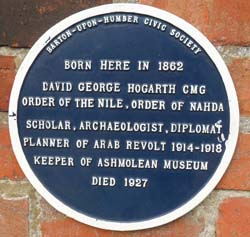 |
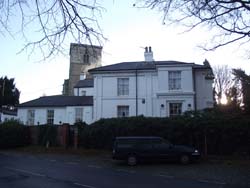 |
The Old Vicarage - Beck Hill The old vicarage of St. Peter's Church (see in the background). David George Hogarth was born here in 1862. Chad Varah, the founder of the Samaritans, was also born here, in 1911. |
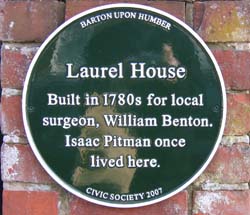 |
 |
Laurel House - Whitecross Street Built in 1780 for the local surgeon William Benton. This was once the residence of Isaac Pitman. It is now a private residence. |
 |
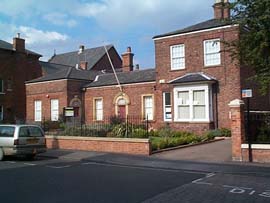 |
Former Police Station and Magistrates Court - High Street The old police station and magistrates court was designed by J. S. Padley and built in 1847 (the date is above the main door). The police station was the building to the right and the magistrates court the building to the left. This building was originally single-storey throughout. |
 |
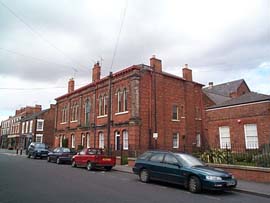 |
Oddfellows' Friendly Society - High Street The land to build the Oddfellow's Hall was purchased in 1863 after originally trying to purchase land opposite the (old) police station. The Hall was completed in 1864. In the early 1900s it became Barton's first cinema. The top half is now empty and the lower half are private flats. |
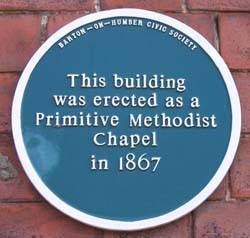 |
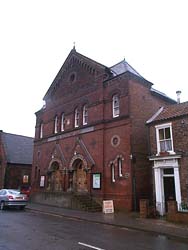 |
Primitive Methodist Chapel - Queen Street Erected in 1867 as a Primitive Methodist Chapel and was, in fact, the third one in Barton, the first standing on the site of the current surgery on King Street and the second situated along Newport. This chapel ceased being used by the Methodists in 1961 before being taken on by the Salvation Army a few years later. It was later sold when the Salvation Army moved into their new purpose built building and is now known as the Joseph Wright Hall; in recognition of the architect - a pupil of Cuthbert Broderick. |
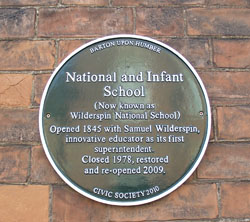 |
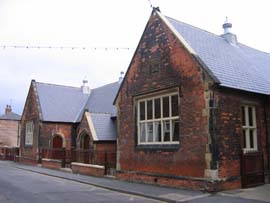 |
National & Infants School - Queen Street Erected in 1844 and opened in 1845. The first superintendent of the Infant School was Samuel Wilderspin. The infants school closed for 11 years in the mid-1800s before opening again. It is now a museum and heritage centre. Click here for more details. |
 |
 |
Temperance Hall - Queen Street The
Temperance Society was formed in Barton in 1837. It purchased a plot of land
on New Road (Queen Street) and erected a large hall at a cost of £700. It
was used for temperance meetings, holding the County Court and as an annex
to the National School opposite. It was closed in 1903 and offered for sale.
It reopened as the Assembly Rooms, which it still is today. |
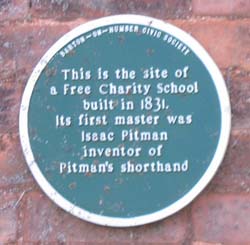 |
 |
Free Charity School - Queen Street Built in 1831 as a free charity school and was once in the grounds of the mansion of the Long family of Barton (as much of the land around here was). The first master was Isaac Pitman who was the inventor of Pitman's shorthand. It is now two private dwellings. |
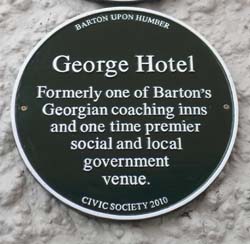 |
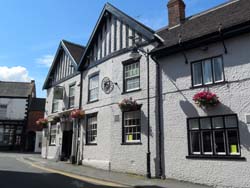 |
George Hotel - George Street One of the older inns of Barton, and was originally called the George and Dragon. It is one of the Georgian coaching inns which served Barton on the London to Hull route. It was recorded as far back as 1695, and at one time belonged to the Nelthorpe family. It has been a commercial and excise office, and a posting house, and also a venue for local government. |
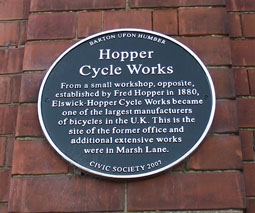 |
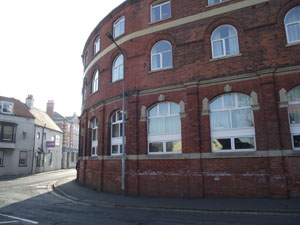 |
Hopper Cycle Works Offices - Brigg Road The former offices of Elswick-Hopper Cycle Works. The architect was Arthur Stamp, and the buildings became occupied in late 1905. The whole building was redeveloped into apartments in 2006. |
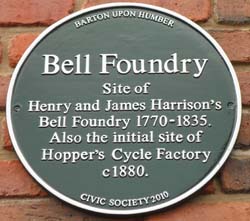 |
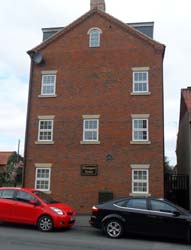 |
Bell Foundry - Brigg Road The site of Henry and James Harrison's bell foundry was in the vicinity of this building. Traces were found when excavations were done in the area. It was also the site of the blacksmith's which was to become the initial Hopper Cycle workshop, house and showroom. |
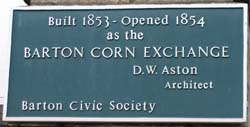 |
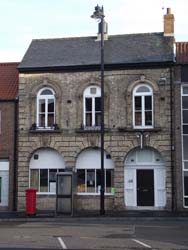 |
Barton Corn Exchange - Market Place Former Barton Corn Exchange was designed by D. W. Ashton and built in 1853. There was a butter market on the ground floor. This building has yellow gault clay bricks, unlike the more usual red-brown locally made bricks. |
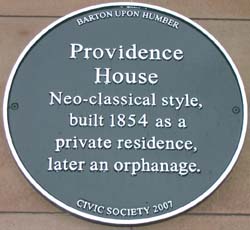 |
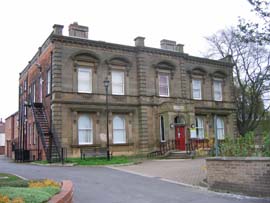 |
Providence House - Holydyke This building was designed by D. W. Ashton of Hull and built in 1854 for Thomas Tombleson who was one of the largest landowners in the parish. Around 1920 it became the Lincolnshire branch of the National Children's Home, before becoming a School annex. It is now a Public Library and an Adult Education Centre. |
 |
 |
46 Westfield Road The former home of Ted Lewis, author of Jack Carter's Law, The Rabbit, GBH and more. |
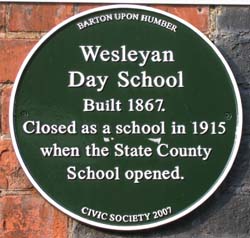 |
 |
Wesleyan Day School - Maltby Lane Built in 1867 as the Wesleyan Day School. It closed in 1915 when the County School opened (on Castledyke West). It was once the home of the local playschool and youth club. It has recently been refurbished and has been re-launched as "The Hub". |
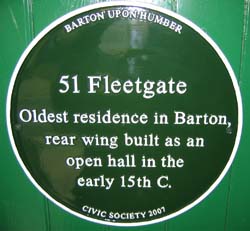 |
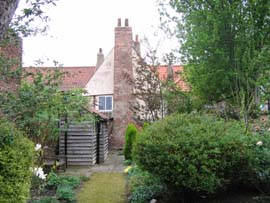 |
51 Fleetgate, Barton upon Humber Thought to be the oldest residence in North Lincolnshire and certainly in Barton. The actual building dates from around 1325. It has a 15th century timber-framed rear wing. Its last resident, Fred Clipson, died in 1989. It is open to the public on certain days. Click here for more details. (please note the picture is of the rear of the property) |
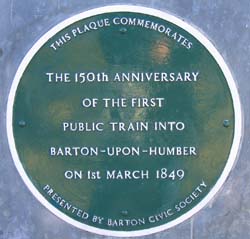 |
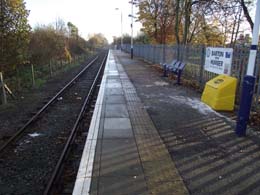 |
Railway Station, Barton upon Humber On the 1st March 1849 the first public train arrived in Barton at this station. The station has changed dramatically since this date, having only one line now as apposed to numerous originally. The original station building complex was demolished in 1973 to leave the station looking similar to what it does today. |
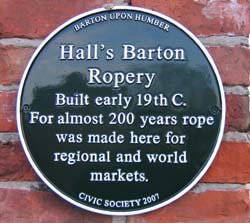 |
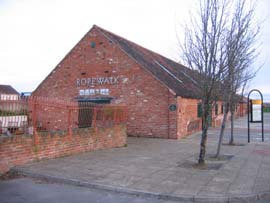 |
Hall's Barton Ropery - Barton Waterside Hall's Barton Ropery was established in 1767 by William Hall. This particular building was erected in the early 1800s. The ropery was busy during the two great wars and survived the depression of the 1930s. In 1986 it was taken over by Bridport Grundy Plc. Three years later, on 23rd December 1989, Bridport Grundy Plc closed the ropery. It is now a museum and art gallery. |
 |
 |
Waterside Inn - Barton Waterside The Waterside Inn was the main meeting point for the Stage and Mail coaches that travelled between Barton, Lincoln and London and for the carriers who travelled over to Hull due to its closeness to the ferry service (which was situated on the Haven just opposite - see below). This building was built in 1715 and is now a private residence. |
 |
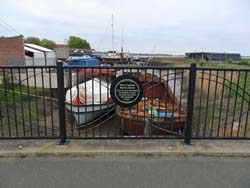 |
Ferry Landing - Barton Haven On the banks of the Haven, just opposite the Waterside Inn (above), stood the two jetties which served the numerous passenger and goods ferry services which served Barton for hundreds of years. It wasn't until the new ferry terminal at New Holland, and later the Humber Bridge, were built that the service ceased from Barton. |
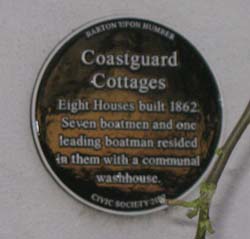 |
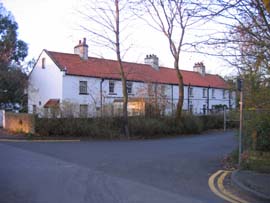 |
Coastguard Cottages - Barton Waterside These cottages were built in 1862 to house seven boatmen and a leading boatman. The Humber was much busier in the 19th century and the coastguard service was much needed. These cottages are now private houses. |
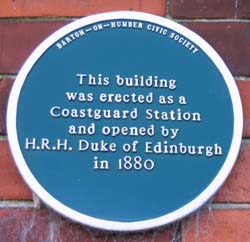 |
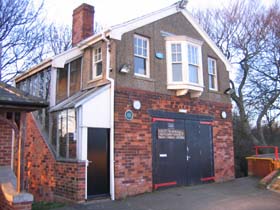 |
Coastguard Station - Barton Waterside Erected and opened in 1880 as a coastguard station by H.R.H. Duke of Edinburgh. The many Sloops, Keels and other river craft which traded on the Humber would have needed a coastguard service. It closed in the early 1920s and is now the starting point of the Viking Way walk. |
(pictures courtesy of www.inbarton.co.uk)
|
Copyright 2018 Barton upon Humber Civic
Society and www.inbarton.co.uk. |